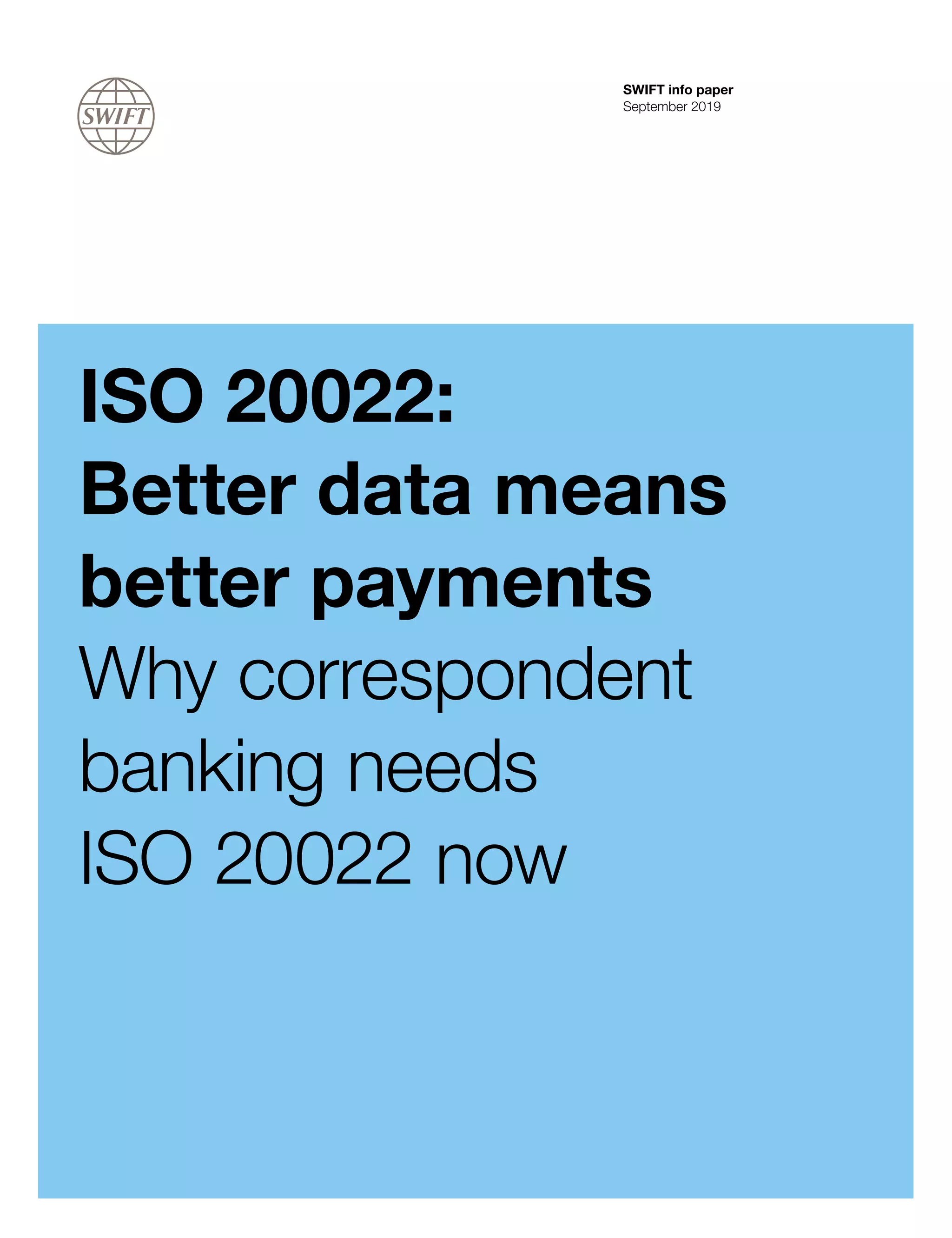The document discusses the need for correspondent banks to adopt the ISO 20022 data standard for international payments to improve data quality and address issues like delays from missing information, lack of automated reconciliation, and inability to support value-added services. ISO 20022 allows for structured, granular data that can provide more transparency and enable straight-through processing. While transitioning will require changes to systems and data capture, the benefits of reduced costs, improved compliance and customer experience make it important for banks to actively participate in the transition to ISO 20022 for cross-border payments.







